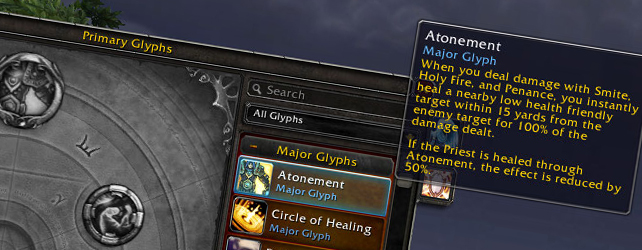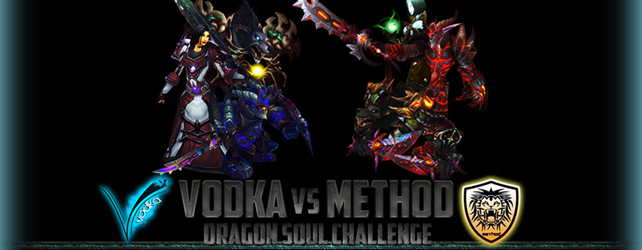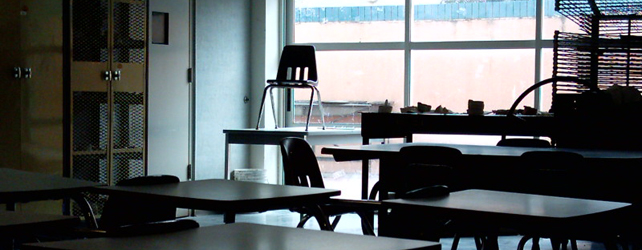httpv://www.youtube.com/watch?v=_488Ir0itpU
Forget arenas.
Forget rated BGs.
Give me competitive PvE raiding!
Vodka and Method, 2 of the world’s best guilds, going heads up in the Dragon Soul challenge hosted by Athene for charity. Last time we saw something like this was back during BlizzCon 2011 when Vodka and Blood Legion went at it live with some of their members on a stage in front of thousands of people. When I watched those two guilds go at it during BlizzCon, the announcers and the overall event was really exciting to watch. Blizzard had some cool camera tools at their disposal and the plays were called by Ghostcrawler and Daelo. Blood Legion took that one after Vodka succumbed to heroic Ragnaros at the end.
If one wanted to devise story lines, there are a few things. The question on everyone’s minds is can Vodka avenge their loss and come back in the latest raid tier? A more subtle angle is the battle between regions: One of North America’s finest guilds vs Europe’s best. No faction questions here since both raid teams are Alliance (although I did find it interesting that Method was planning the switch to Horde).
Vodka
Between Method and Vodka, my money was on Vodka for winning out this one. They have the experience in an environment like this coming out of BlizzCon when they took on Blood Legion. Their strategies for time trials involve a high risk/high reward approach. They deliberately underheal (bring in less healers) in favour of additional DPS. In long run, this strategy pays off with faster kills as long as their raid doesn’t get overwhelmed.
Method
I honestly had no idea what to expect from Method. They’re one of the top guilds in Europe, but without much of an idea of their raid comps or seeing how they plan, I’m not sure what impressions to had. I figured they’d had their own set system and would stick to playing their style of raiding that’s gotten them this far. Nothing super complicated or anything.
Thoughts
Spoilers below. But if you don’t care, go ahead and read on:
- Nice approach on Mor’chuk with the tanking positions. Most guilds usually tackle the two bosses side by side but with the advent of the timer, both guilds changed the position so that one boss was at the top of the ramp and the other was on the bottom.
- The wipe on Zon’ozz slowed Vodka down significantly. I cringed but they’ll go on to recover quite well.
- Both guilds kicking the lore aspects of the instance since it slows them both down (Vodka, especially).
- Madness of Deathwing: Ouch to Vodka for losing a healer in a weird fashion with the platform jumps. That darn bug.
- Athene and Kina: Would have loved more commentary throughout the stream on more aspects of the raid encounters as well as additional insight in what’s going on in the different mentalities of the guild as they go from boss to boss.
PvE power rankings
| Guild |
Region |
Record |
| Blood Legion |
NA |
1-0* |
| Method |
EU |
1-0 |
| Vodka |
NA |
0-2 |
* I ranked Blood Legion as higher on the tie break since they defeated Vodka at BlizzCon live in front of thousands of screaming people.
Here we have the first ever PvE power rankings.
I personally believe that Vodka’s the better guild in the last engagement. The calculated risks they have taken have a potentially higher payoff and there were times where they came really close to clutching out and winning. But all those tiny mistakes and the assorted wipe does add up thwarting Vodka from getting their first win.
Another way to spice it up is adding an Iron man challenge of sorts. Finishing out an instance with the least amount of overall deaths. Wouldn’t just be enough to race the other team, but have to add that extra element of perfection.
To add a little diversity to future events, I wonder how feasible it is to revive some of the “older” raids. On a special server, adjust and inflate the stats of the older raid bosses so that they can remain challenging for the maximum player level.
The concept of a PvE raiding league has some merit. If it were up to me to start it, I’d set up an invitational 16 guild league (8 NA and 8 EU). it would take place over 8 weeks and then lead to playoffs. Each week would have it’s own instance/bosses of the week. Maybe week 1 would be tier 11. Week 2 would then be Firelands. Week 3 would be back to Black Temple. Week 4 could be Ulduar. Great way to recycle the older instances if it their stats could be made. Or the alternative is to lower the stats of the raiders so that they’re at level with the content.
But overall, I’m really impressed. Props to Athene, Kina, Vodka, Method and everyone else involved for an excellent event.




